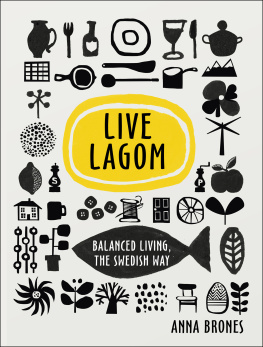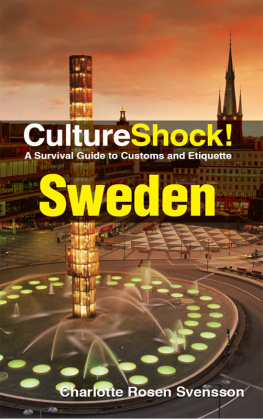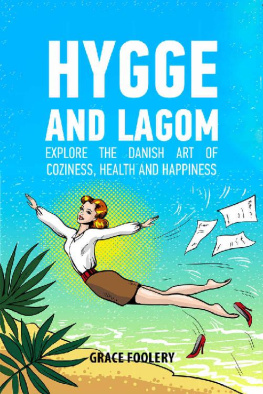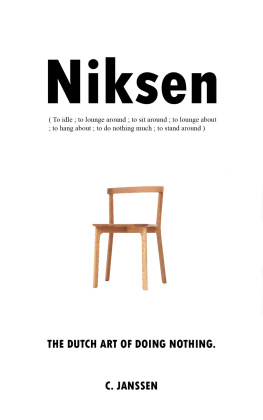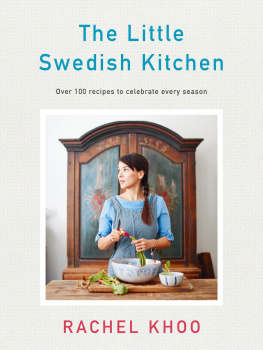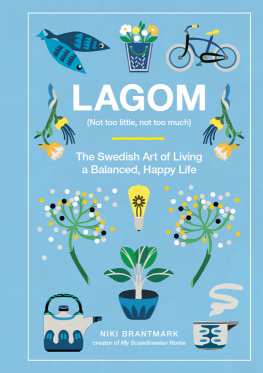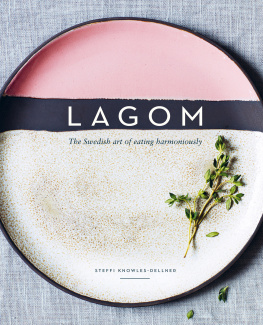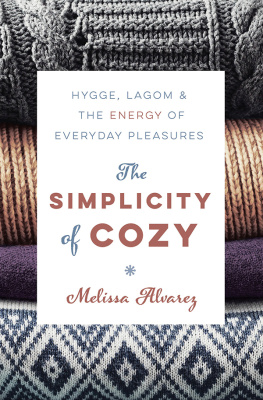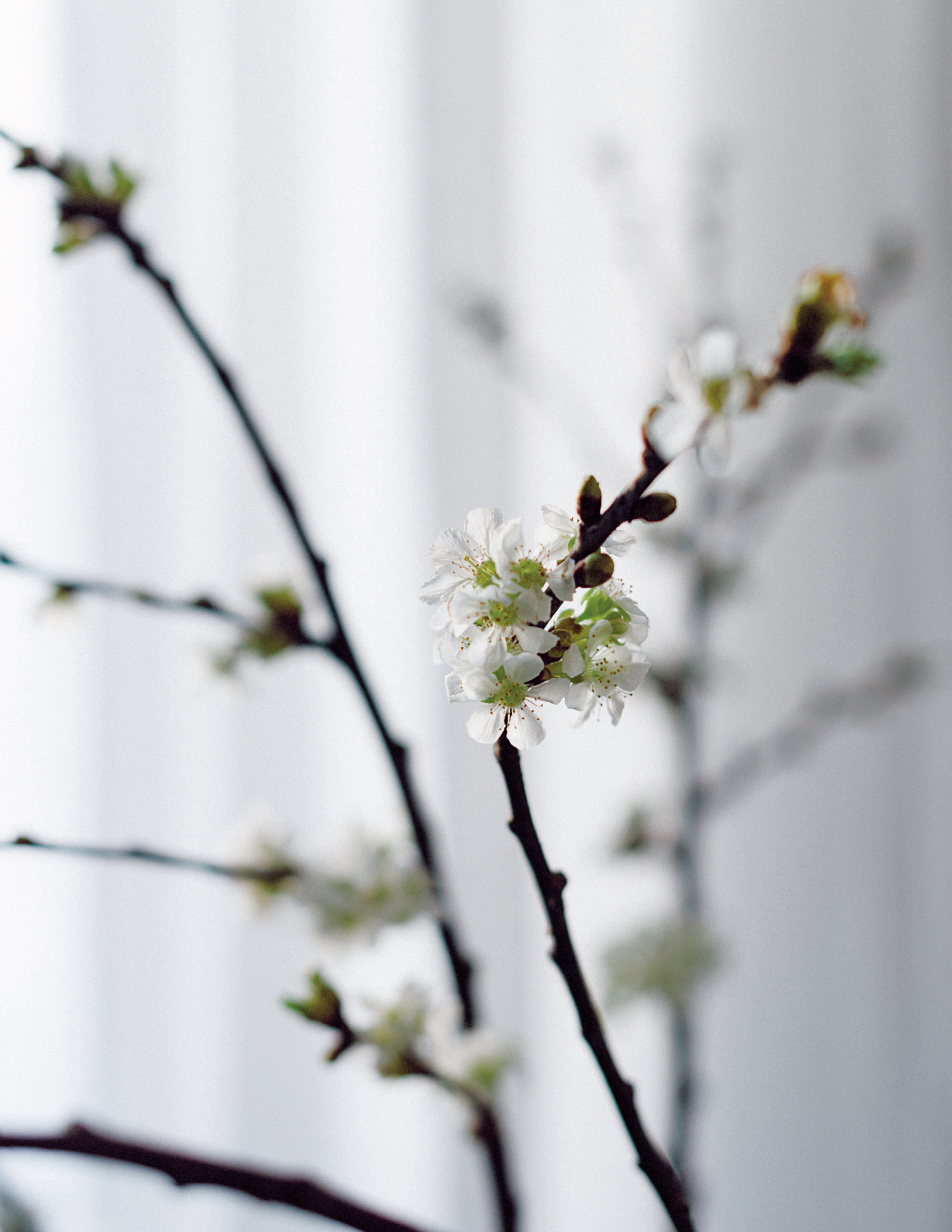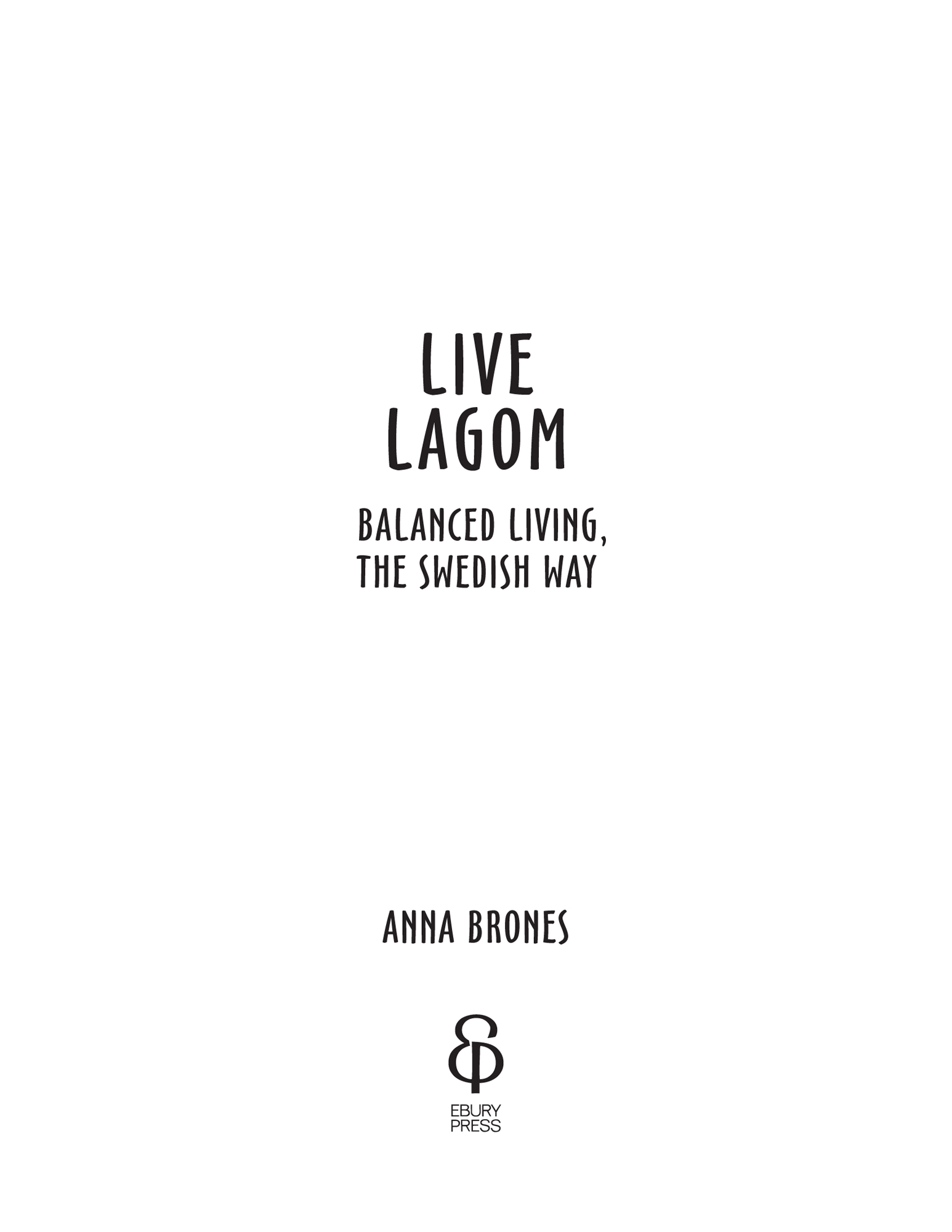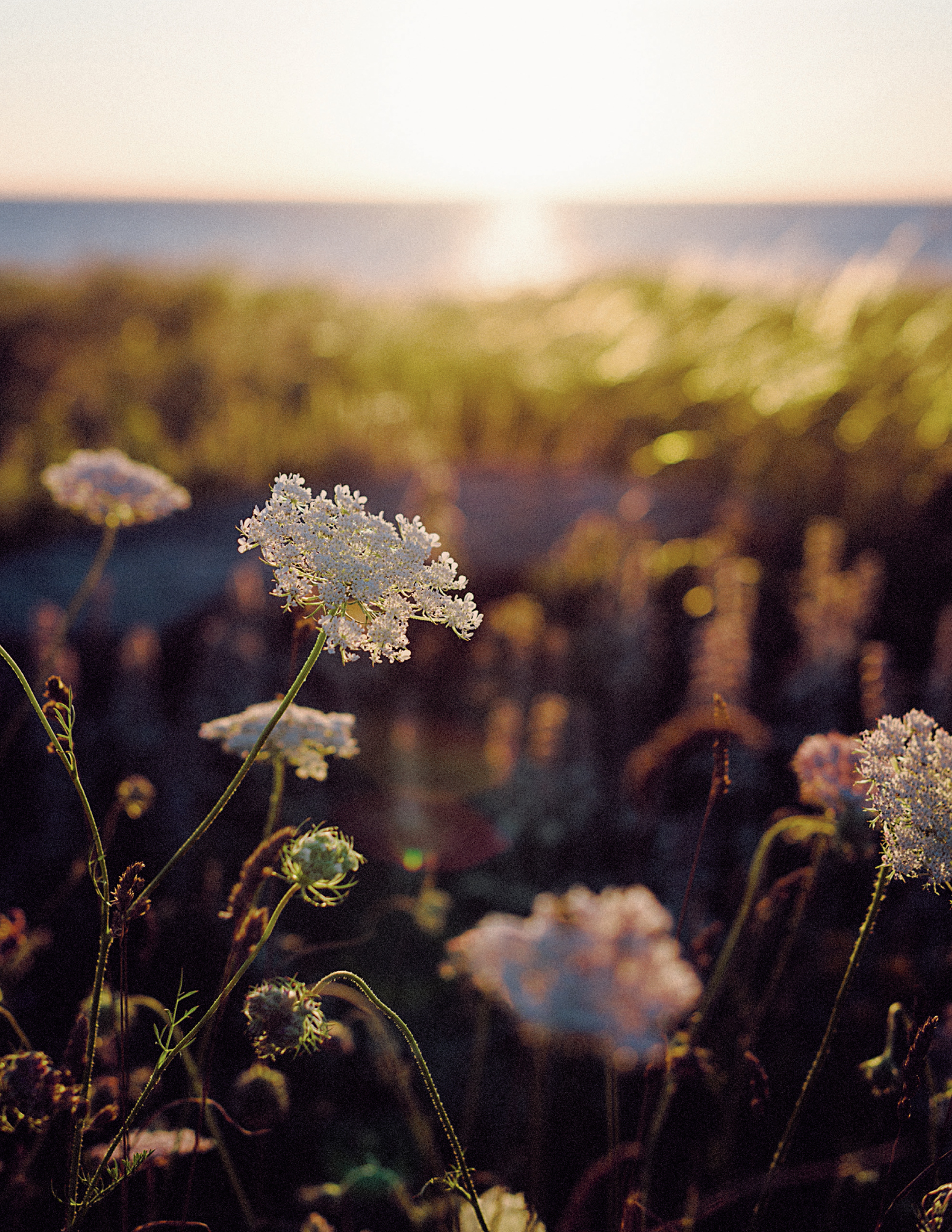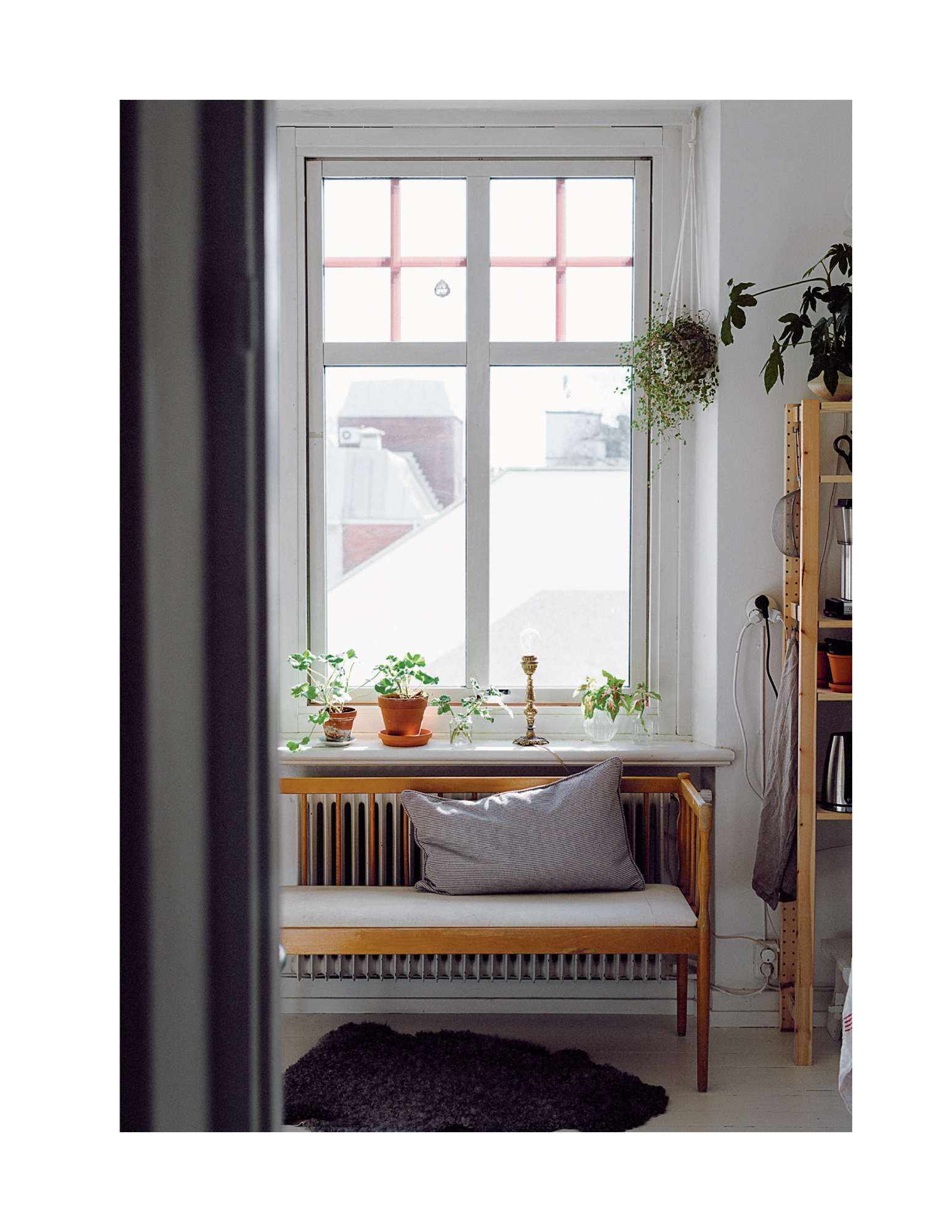CONTENTS
ABOUT THE AUTHOR
Anna Brones is a Swedish-American freelance writer and founder of Foodie Underground. She writes about food, bikes and culture, and is the author of four other books including, Fika: The Art of the Swedish Coffee Break. Her books and recipes have been featured in Saveur, The New York Times T Magazine, Eater, Cool Hunting, Food52, Bicycling, and more. Annas mother was an artist who was born and raised in Sweden, and introduced Anna to the concept of Lagom.
ABOUT THE BOOK
Live Lagom is a practical lifestyle guide based on the Swedish philosophy of Lagom. Meaning just the right amount, the concept can be applied to every aspect of your life and promotes balance.
At a time when we are all concerned with saving money, feeling less stressed, acting more consciously towards our environment as well as creating our ideal homes and careers, Lagom offers an insight into how one of the happiest and most satisfied countries and cultures achieves this balance in day to day life.
With chapters covering Home, Work and Health, the practice of Lagom is explained in traditional and practical terms, and includes advice and tips on how to find your happy medium.
This is the book to make you enjoy the moment, and not only accept what you already have but also to make the most of it.
INTRODUCTION
Sweden is a land of extremes. In the winter darkness feels everlasting, yet in the height of summer the sun barely sets. Dense, scarcely populated forests are home to lakes surrounded by granite rocks. Even in the cosmopolitan areas nature is never far away. Yet in these extremes there is a balance, a path through the middle that takes inspiration from the Swedish climate and environment. On the coldest days, warm candles flicker in a kitchen window; a welcoming scene in contrast to the stark landscape outside. Summer is a celebration, a time to release the darkness of the rest of the year, and life flourishes. This Nordic land is a country of calming hues, the pale greys and blues of the rocks and sky easing into warm yellows of the sun streaming into a living room. Buildings are orderly, functional, their design an expression of the culture that has brought them to life.
Whether weve spent time in Sweden or not, we are most likely familiar with this Scandinavian country, partial to some of these scenes. For many, there is an allure to Sweden, and while its population is small, its cultural influence is significant. Without even having travelled there, we feel like we know the Swedes. Weve listened to their music, read their books, tasted their food, been inspired by their design. There is a love and respect for Swedish culture, often admiration, even for those who arent affiliated by family connection or havent stepped foot into the country.
Culturally, Sweden is a place often put on a pedestal, the place we sometimes dream of living, the place we look to for lessons on how to live. Like its Scandinavian counterparts, its a country where the quality of living is high, people are treated equally and nature is respected and revered. The country is regularly amongst the top players in lists of best places to live for social health, happiness, sustainability and beyond giving economists and political scientists renewed reason to look to the Nordic Model.
From the outside looking in, Swedish culture exudes a general calmness and order. Things rarely seem to be out of place, with no room for chaos. The most visual representation of this is Scandinavian design. Simple and pared down, the countrys most well-known designs speak to a need for function and aesthetic. Even in the wilder colours and prints to be found in iconic Swedish textiles, there is a general sense of rationality; never too much to leave you feeling overwhelmed, just enough to keep you interested.
In a chaotic, modern world, this all feels like a breath of fresh air. Were craving more balance, more equality, more simplicity. Were looking for something thats often hard to put an exact name to, but its a feeling of contentedness, of having just the right amount of things, the right amount of time.
The Swedes happen to have a word for exactly that: lagom . The modern meaning roughly translates to just right. Not too much, not too little just something in the middle, the moderate choice between two extremes. Lagom is a thread that ties many parts of Swedish society and culture together, the cornerstone of personal behaviour, design ethos and community. There is no quantifiable amount of lagom, which can sometimes make it hard to grasp exactly what it is. Lagom is part personal balance and part social understanding, something thats good for us and the world around us. As we strive to manage our busy everyday lives, lagom might just be the key that we need to unlock a more intentional, balanced, healthy lifestyle.
As the daughter of a Swedish expat, I grew up not loving lagom. Certainly, it was a word commonly used in my household: How much food do you want? Lagom. How much coffee should I pour? Lagom, but as a driver of behaviour, lagom was to be avoided. My mother, an artist, was born and raised in Sweden. For her, lagom represented the structure of the restrictive Swedish social box that she had wanted to leave in her twenties, moving to the American West Coast where social expectations were at a bare minimum and she felt that she had more freedom to be who she wanted to be. In my mothers view, lagom was less about balance and more about the social equaliser; the thing that restrained you, kept you from being able to fully express who you were and what you wanted.
But as I have grown older and started to think about lagom in more complex ways, I see how it trickled into our family life regardless, perhaps in ways that werent immediately apparent to my mother or myself. While our family was eccentric in our own ways, we were lagom as well, channelling a Swedish approach to the world around us. We always ate balanced meals, full of whole grains and vegetables, and we tried to reduce our impact on the environment as best we could, my mother tending the compost in the garden and washing out plastic bags to be reused. I grew up with the mantra that good things cost money, that when you buy quality, you are making a long-term investment, not one dictated by trends or fleeting interests. My parents believed in the value of public school, that social good came from the benefit of an entire community, not just an individual. Our sofas were covered in wool blankets and our cupboards full of textiles made from natural fibres. Perhaps our lifestyle wasnt so lagom vis--vis our American neighbours (who most likely thought that we were a bit extreme in our ways), but it certainly was representative of a more Swedish approach to living, one that was moderate and mindful.

